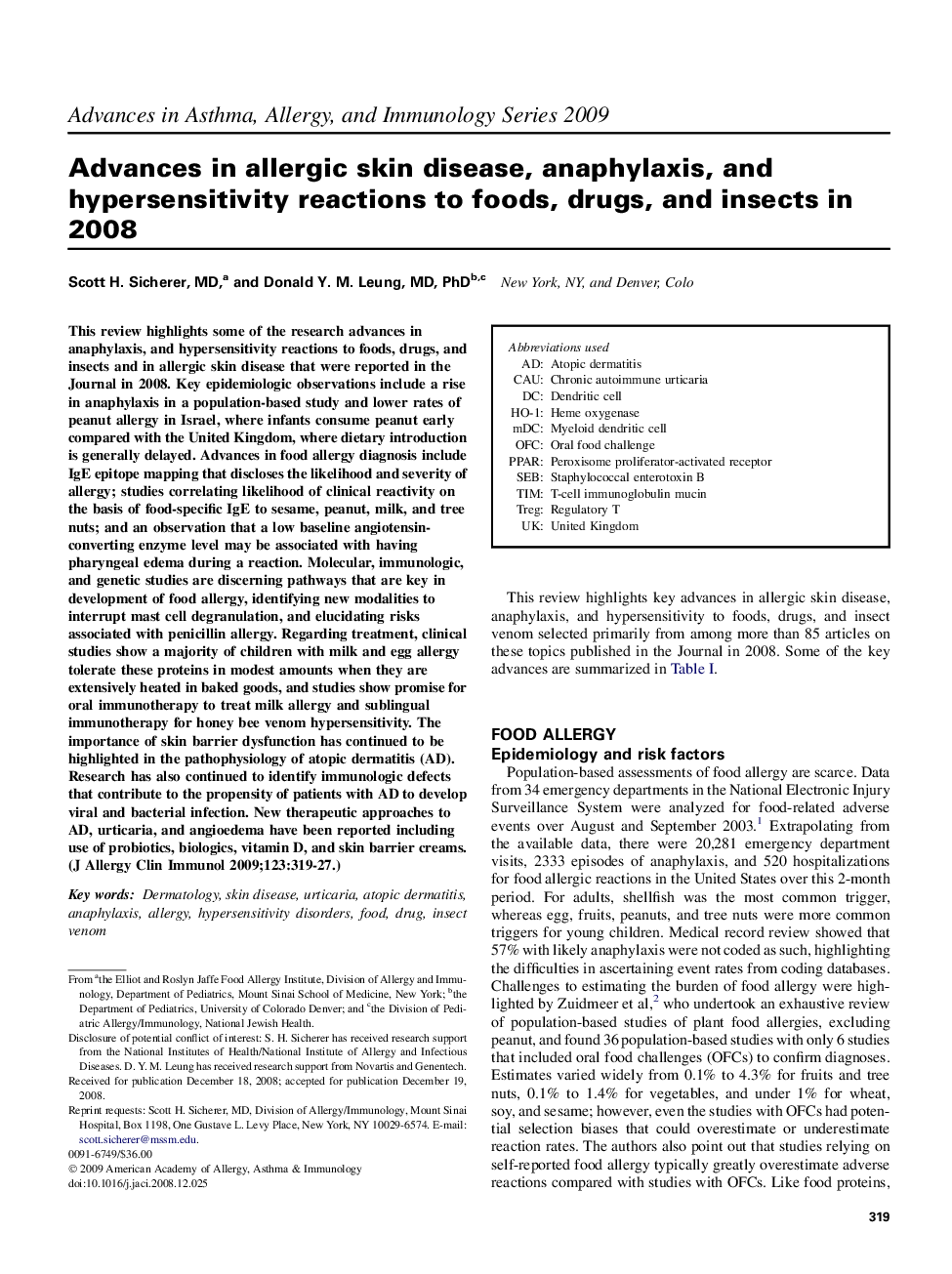| کد مقاله | کد نشریه | سال انتشار | مقاله انگلیسی | نسخه تمام متن |
|---|---|---|---|---|
| 3200866 | 1201945 | 2009 | 9 صفحه PDF | دانلود رایگان |

This review highlights some of the research advances in anaphylaxis, and hypersensitivity reactions to foods, drugs, and insects and in allergic skin disease that were reported in the Journal in 2008. Key epidemiologic observations include a rise in anaphylaxis in a population-based study and lower rates of peanut allergy in Israel, where infants consume peanut early compared with the United Kingdom, where dietary introduction is generally delayed. Advances in food allergy diagnosis include IgE epitope mapping that discloses the likelihood and severity of allergy; studies correlating likelihood of clinical reactivity on the basis of food-specific IgE to sesame, peanut, milk, and tree nuts; and an observation that a low baseline angiotensin-converting enzyme level may be associated with having pharyngeal edema during a reaction. Molecular, immunologic, and genetic studies are discerning pathways that are key in development of food allergy, identifying new modalities to interrupt mast cell degranulation, and elucidating risks associated with penicillin allergy. Regarding treatment, clinical studies show a majority of children with milk and egg allergy tolerate these proteins in modest amounts when they are extensively heated in baked goods, and studies show promise for oral immunotherapy to treat milk allergy and sublingual immunotherapy for honey bee venom hypersensitivity. The importance of skin barrier dysfunction has continued to be highlighted in the pathophysiology of atopic dermatitis (AD). Research has also continued to identify immunologic defects that contribute to the propensity of patients with AD to develop viral and bacterial infection. New therapeutic approaches to AD, urticaria, and angioedema have been reported including use of probiotics, biologics, vitamin D, and skin barrier creams.
Journal: Journal of Allergy and Clinical Immunology - Volume 123, Issue 2, February 2009, Pages 319–327